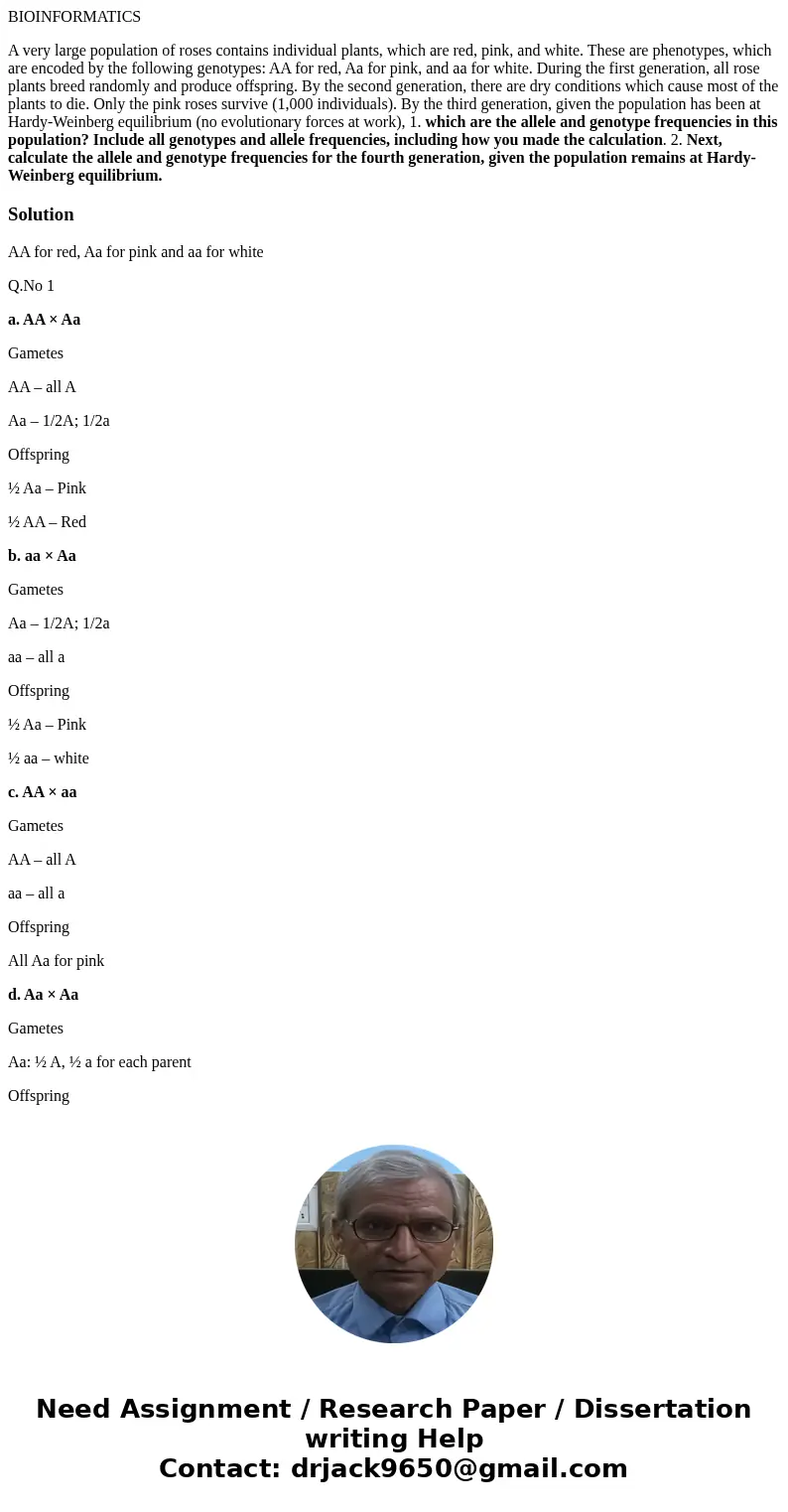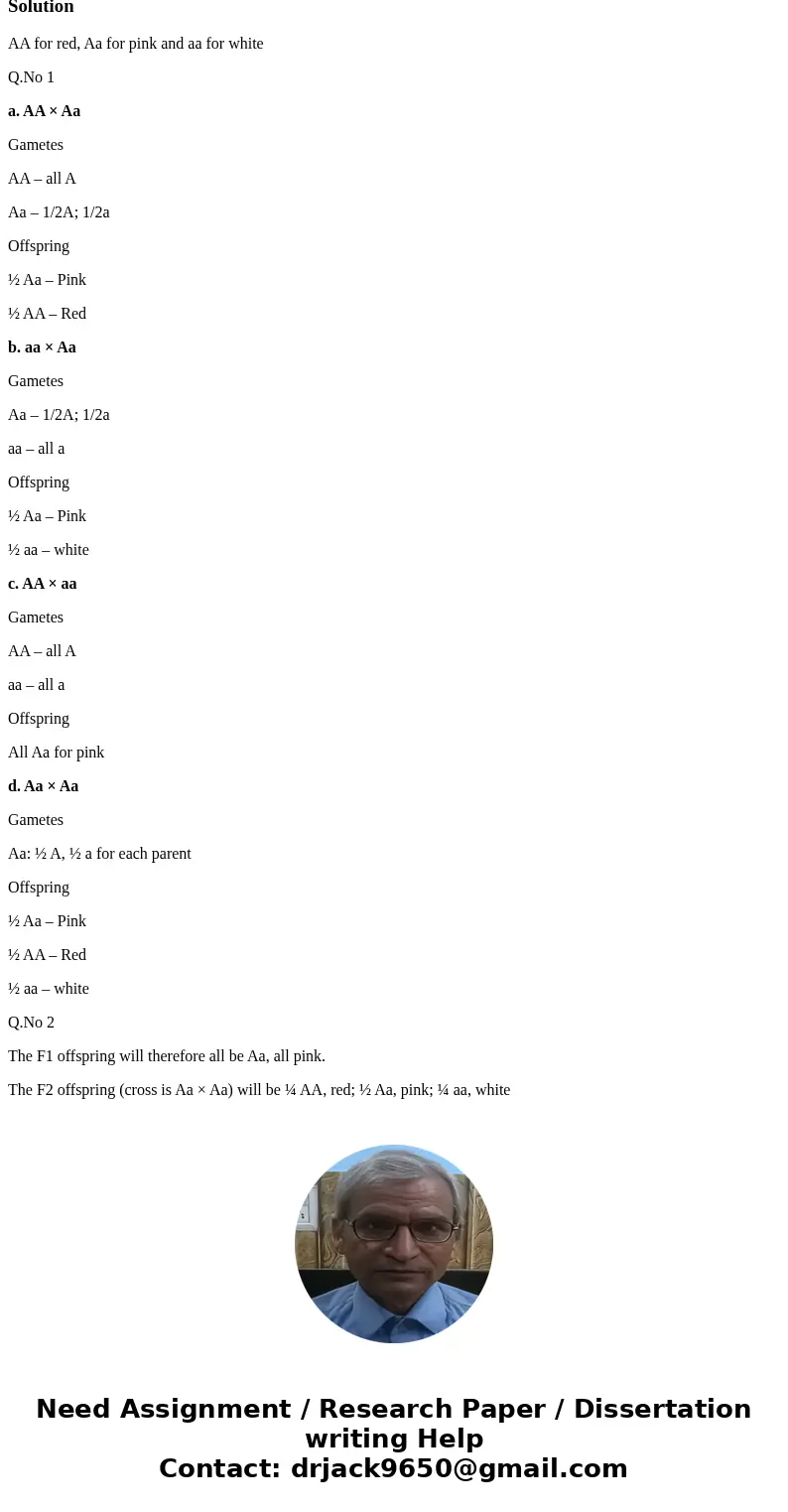BIOINFORMATICS A very large population of roses contains ind
BIOINFORMATICS
A very large population of roses contains individual plants, which are red, pink, and white. These are phenotypes, which are encoded by the following genotypes: AA for red, Aa for pink, and aa for white. During the first generation, all rose plants breed randomly and produce offspring. By the second generation, there are dry conditions which cause most of the plants to die. Only the pink roses survive (1,000 individuals). By the third generation, given the population has been at Hardy-Weinberg equilibrium (no evolutionary forces at work), 1. which are the allele and genotype frequencies in this population? Include all genotypes and allele frequencies, including how you made the calculation. 2. Next, calculate the allele and genotype frequencies for the fourth generation, given the population remains at Hardy-Weinberg equilibrium.
Solution
AA for red, Aa for pink and aa for white
Q.No 1
a. AA × Aa
Gametes
AA – all A
Aa – 1/2A; 1/2a
Offspring
½ Aa – Pink
½ AA – Red
b. aa × Aa
Gametes
Aa – 1/2A; 1/2a
aa – all a
Offspring
½ Aa – Pink
½ aa – white
c. AA × aa
Gametes
AA – all A
aa – all a
Offspring
All Aa for pink
d. Aa × Aa
Gametes
Aa: ½ A, ½ a for each parent
Offspring
½ Aa – Pink
½ AA – Red
½ aa – white
Q.No 2
The F1 offspring will therefore all be Aa, all pink.
The F2 offspring (cross is Aa × Aa) will be ¼ AA, red; ½ Aa, pink; ¼ aa, white


 Homework Sourse
Homework Sourse